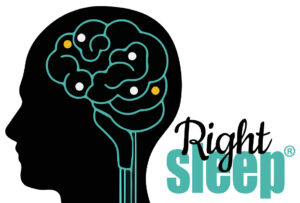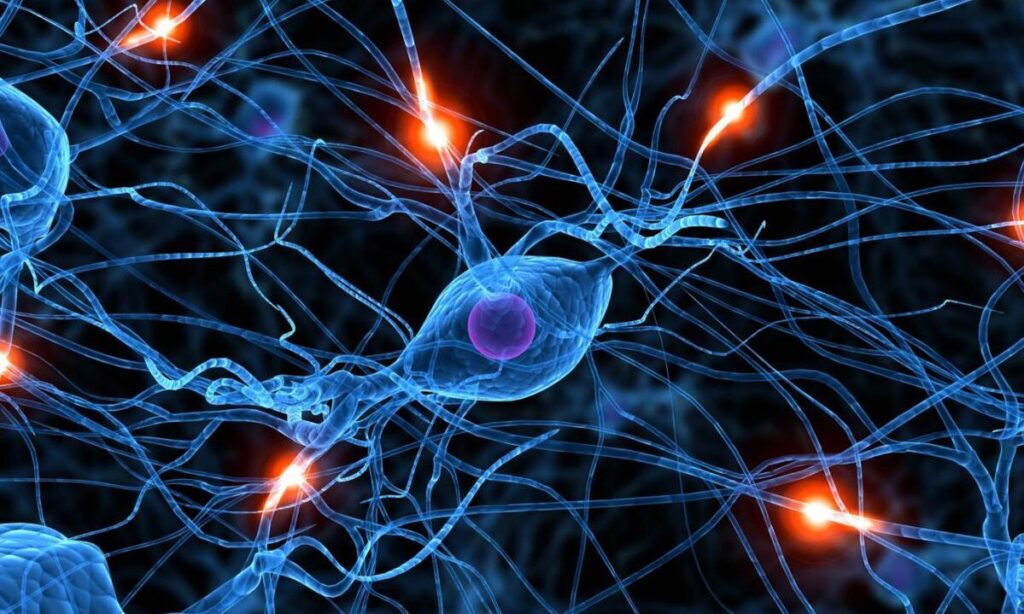
THIS POST EXAMINES MINERALS AND MICRO NUTRIENTS:
All humans are unique, and so are snow flakes, so what?
All snowflakes change their state of being (melt) at 33 degrees, and subsequently their state or dimension changes from a solid to a liquid. You could say the snowflake starts to die due to heat, but that may appear a little extreme.
All humans change their state of being (start to die) when they do not get enough oxygen. When they get no oxygen, or can’t metabolise it they die.
All humans must take in oxygen and circulate it into the cells of our physical bodies – especially the mitochondria. The oxygen is transported by iron in the blood. Excess iron in the tissues (that is not circulating oxygen) reacts to oxygen and hydrogen (water) and rusts. This oxidation/rusting causes inflammation that reduces the flow of oxygen in the blood and is the root cause of all dis-ease. The regulation of iron between the cells of the tissue and the blood is crucial to our longevity and quality of life. The only mineral that regulates iron is copper. Copper is crucial in optimising the life giving properties of oxygen. Copper is also crucial in reducing excess iron in our tissue cells to minimise oxidation/rusting.
Copper is the ONLY mineral that facilitates the regulation of iron in the blood and its effective transportation to the cells. Magnesium Potassium and sodium are also crucial for creating ATP and creating an energy supply to pump the ‘oxygen carrying iron’ to the cells.
Oxygen is also inhibited in its transportation to the cells by a compound called Advanced Glycation End Products (AGES). This compound is created when sugar (including carbs) are combined with either a protein or a fat.
AGES is a very sticky compound that adheres to the inside of blood vessels (especially the blood vessels of the eye and the heart and other organs, including the brain).
One of the ways to deal with the damage it has already caused is to take Benfotiamine (Unlocking Benfotiamine: Unique Benefits and Advantages (drberg.com). As a fat-soluble form of Vitamin B1, benfotiamine penetrates fatty membranes 360% more effectively than regular thiamine.
Inhibiting AGE Formation: How Does it Work?
Think of Benfotiamine as the ultimate team player. It doesn’t tackle sugar molecules head-on but instead amps up transketolase – an enzyme that breaks down harmful metabolites before they morph into AGEs. So, it’s like this: “The star player isn’t making the points himself, but he’s setting up his teammates to score.”
B6 and Lipoic Acid also help reverse the damage of AGES.
All the nutritional sources mentioned above, are available within the LiCrON guidelines of VFP#1 Protocol: Regeneration – as per the further information:
STOP CONSUMING SUGAR!
Can you survive without sugar, and can you train and perform as an athlete without sugar -YES!
In a specific scientific test on athletes not consuming sugar, they did not lose muscle; instead, they experienced a slight increase of muscle mass . Meanwhile, their average weight and fat mass significantly decreased. Furthermore, exercise performance was not influenced. More here.
The best way to prevent more damage is to stop your intake of sugar, or at least minimise it to under 25g per day. The most significant harm that AGES brings is in rendering proteins unstable (less functional), and the cells suffer reduced oxygen-carrying capacity and dysfunction.
Your body, and especially your brain, function much better when glucose levels are low and you can utilise ketone bodies for increased informational energy. More here.
Furthermore, stopping sugar intake and allowing your metabolic flexibility to increase, so it can utilise the benefits of ketone bodies, as well as being able to use your bodies natural glucose storage (and produce more natural glycogen as required) – “results in resolving oxidative stress, by the up-regulation of anti-oxidative and anti-inflammatory activities, improved mitochondrial function and growth, DNA repair, and autophagy”.
N.B. Hormones and growth factors (known as the B vitamins are also type of proteins); which means dis-ease is caused by surplus sugar. Ketone bodies have been shown to not only preserve muscle and healthy proteins, but remove damaged, dis-eased, and dead proteins, and to use this process (autophagy) as a prostate for further energy production.
The body seeks to regulate its natural blood glucose levels to between 5.3 mmol/L to 3 .9 mmol/L of glucose per day, anything else is converted into energy. For those who have a non/minimal sugar lifestyle, this circulating blood glucose level can healthily reduce to between 3.9 mmol/L and 2.0 mmol/L. The liver will store up to approx 120 gms of glycogen, furthermore, it can produce more without you having to eat any – so you don’t need to eat any sugar! More on glycogen here.
INSULIN PLAYS A CRUCIAL ROLE (but more is not better – less is better).
Surplus glucose (any glucose that is not used immediately) is converted into the compound AGES.
Surplus glucose levels are above a blood glucose level of 5.0 mmol/L. This means that anyone with a circulating blood glucose level above 5.0 mmol/L is going to have the propensity, likely-hood of experiencing more stress and anxiety on a mental and emotional level (due to mineral imbalances with oxygen), as well as physical stressors. Their ability to show resilience will reduce, their ability to learn will be very low, their ability to socialise in a positive manner or be creative will be very low. They will have activated their fight and flight response, and constant time in this ‘zone’ will lead to chronic stress. This is a trigger for deep rooted trauma and can lead to individuals going into dorsal vagal mode – potential shut down, freeze, seizures, loss of bowel control, feinting and even a stroke or heart attack or a brain haemorrhage.
Sugar and carbs need insulin to convert sugar into glycogen for energy. Insulin is the main regulator of glucose from the liver, however, when insulin is high it does not allow the liver to release its store – it only does this when insulin levels are low. So low levels of insulin allow glucose stores from the liver, and other organs, to be produced and released as and when needed – so you don’t need to eat any sugar!
THERE IS NO DIS-EASE OR ILLNESS – THERE IS ONLY DYSREGULATION OF MINERALS.
There is only stress induced from mineral loss and dysregulation – which leads to metabolic inflexibility, inflammation, and dis-ease. This stress also includes mental and emotional stress (it is still oxidative stress – caused by oxygen reacting with the electrons of other minerals, proteins, hormones, growth factors, neurotransmitters etc, to become dysregulated) – all can be relieved through the correct balance of minerals.
The misuse of oxygen, caused by copper not regulating iron correctly to transport oxygen is what causes an oxidant (damage to oxygen through the taking on of electrons from other minerals), and leads to the rusting of iron in the tissues, metabolic inflexibility, inflammation, and dis-ease. The only correct exit route for oxygen is its conversion to water.
The only mineral that can cause oxygen to turn into water is Copper – more significantly bio-available copper or retinol (vitamin A).
This is a long post, so get a coffee and settle down – HOLD ON A MINUTE –
Coffee – is not coffee – certain coffee is very good for you, whilst most coffee is not – it is a bit like insulin – a little is good, a lot is unhealthy – read on . . .
When you consider coffee as a set of minerals, which it is, you see it for what it is – good or bad.
What is healthy coffee and why?
What is unhealthy coffee and why?
This post has been created from a mass of accumulated research and personal experience. I have tried to put it together in a simple manner, but feel I have failed miserably, however, it is an honest effort to present clarity on a wide reaching topic – and I believe it does present suffient data to support a programme of wellbeing that focuses on nutrition. I am currently working on a new learning/training/workshop and scheme of work that pulls together emotional/behavioural intelligence with physical health and fitness – I am hoping this will be completed before April 2024. In the meantime please take from what is below what you can – but know this – “when you put back that what you are lacking you can correct the real cause of much physical, mental and emotional dysfunction.
Thank You.
Mr. P
The following insights assume that other than the deficiency in question, you are as healthy as possible in all other respects (which for most people would be quite the opposite).
For details of the various Healthy Pathways relating to optimal health please click here to download/save/print off and or read our pdf.
Recent scientific studies of Vitamin D increase & deficiencies:
N.B. Recent studies in the USA indicate that about 20% of white adults and 75% of darker skinned adults have a severe deficiency in Vitamin D. In another recent study (https://vitall.co.uk/health-tests-blog/statistics-vitamin-mineral-deficiency-uk) –
It has been established that almost one billion people worldwide have low levels of vitamin D and approximately 20% of the population in the UK have a vitamin D deficiency. 60% of the population are considered as having insufficient levels of vitamin D.
Customers testing for Vitamin D with Vitall show that the UK average Vitamin D level is 76.8 nmol/L. This is inline with previous estimations, with as many as 21.9% of people having results indicating a deficiency. Specialist’s such as Dr Gominak advocate taking 10,000 – 20,000 IU’s of vitamin D for up to 12 months to achieve Optimum levels of 150nmol/L – 200nmol/L, however, The National Institutes of Health (NIH) recommends an average daily intake of only 400–800 IU – WHY IS THIS?
- A combined analysis of multiple studies with nearly 60,000 participants, found that even a slight increase in Vitamin D levels (above the recommended daily intake) reduced early deaths by 7% – this is an increase in about 6 years for an 85 year old – increasing death until 91 years old!
- Similarly, increasing the daily intake of Vitamin D reduced hip and non-spine fractures by about 20%; furthermore, a daily increase preserved muscle fibers and reduced the risk of falls by 19%.
- Increased daily Vitamin D was also shown to inhibit tumors, especially cancerous one’s from the breast, ovary, colon, prostate and brain.
- A study of 307,000 Europeans found a 25% reduction in lifespan for those with very low Vitamin D deficiency – this is a decrease in about 21 years for an 85 year old – dying at 64!
- Another study of 407,000 Europeans found an increase in dementia of 54% for those with Vitamin D deficiency.
- A 20 year study on 83,000 women showed a 13% increased risk of developing Type 2 Diabetes; furthermore, this increased to 33% when they were also low in calcium. Children who regularly took increased Vitamin D during infancy lowered the risk of type 1 diabetes by 90%.
- Studies on cardiovascular disease, strokes, the immune system and inflammation showed those with the lowest levels were at the highest risk and those with the highest levels had the least risk.
- A study on 25,000 men and women aged over 50, showed a reduction in autoimmune conditions including rheumatoid arthritis, psoriasis, polymyalgia rheumatica and thyroid disease.
Details of all these studies is available at – https://www.hsph.harvard.edu/nutritionsource/vitamin-d/
Specific Research on children and young people:
- Increases in vitamin D have been shown not to influence growth, body composition, or pubertal development – this is significant in supporting its supplementation and maintaining general homeostasis. (https://pubmed.ncbi.nlm.nih.gov/36441522/)
- Vitamin D deficiency and insufficiency are found frequently in adolescents with severe mental illness. Vitamin D deficiency has been linked to an increased risk of developing schizophrenia. In one study of adolescents admitted to an acute mental health facility, those who were vitamin D deficient were 3½ times more likely to have psychotic features when compared to vitamin D sufficient patients [52]. In another review of psychiatric patients, those with the lowest levels of vitamin D (<20 ng/mL) were more likely to be male, of Middle East, South-East Asian, or African ethnicity, and had diagnoses of autism and schizophrenia. When supplemented with 1000 to 4000 IU of vitamin D, many had clinical improvement [53]. (https://www.ncbi.nlm.nih.gov/pmc/articles/PMC4928729/)
- The medical journal BMJ Open concluded that – “There has been a marked and sustained increase in vitamin D supplementation prescribing in children in UK primary care. Our data suggests that national guidelines on vitamin D supplementation for children are not consistently followed by GPs” – this is significant as the proposed protocol from Mr. P includes supplementation of vitamin D at much higher levels than the RDA (https://bmjopen.bmj.com/content/9/12/e031870)
- Vitamin D has been shown to affect mental health on children and young people. The conclusion from research was –
The vast majority of assessed studies, including the most prominent ones (based on the NOS score) supported potential positive influence of vitamin D on mental health in children. Vitamin D intake within a properly balanced diet or as a supplementation, except for a safe sun exposure, should be indicated as an element supporting mental health in children, so it should be recommended to meet the required 25(OH) cholecalciferol blood level in order to prevent or alleviate mental health problems. (https://www.ncbi.nlm.nih.gov/pmc/articles/PMC7999324/)
- Further research concluded –
Vitamin D deficiency and insufficiency are both highly prevalent in adolescents with severe mental illness. The preliminary associations between vitamin D deficiency and presence of psychotic features warrant further investigation as to whether vitamin D deficiency is a mediator of illness severity, result of illness severity, or both. (https://bmcpsychiatry.biomedcentral.com/articles/10.1186/1471-244X-12-38)
Vitamin D tests and correction of subsequent deficient levels are the basis of the amazing protocol called RightSleep from Dr Stasha Gominak (https://drgominak.com/).
She has highlighted Vitamin D deficiency as the cause of poor sleep due to disrupted gut microbiome, deficient B growth factors (what we know as the B Vitamins) and poor performance of the mitochondria.
Mr. P has bought into her support workbook and has personally experienced the benefits of her focused research and refinements from over 5000 clients using the Right Sleep Protocol.

Mr. P’ and his wife tested their Vitamin D for the first time in their lives in February 2023 (they had levels @ 33nmol/L and 15nmol/L respectively). They have since followed this protocol and seen a significant increase in their levels. They have also seen their REM and Deep Sleep increase from levels around 20% of total sleep to levels above 45% (and that was within the first month). Over 32% of their total sleep time is now in deep sleep and this now provides greater time for physical repair and rejuvination to take place. Similarly more than 13% of the time is now in REM sleep (compared with 5% previously) and this allows more time for emotional and mental overload to calm down – it allows for clarity and creativity. Such improvements are significant because it is only during extended periods of Deep and REM sleep that correction of deficient minerals, hormones and growth factor levels and metabolic flexibility can be of full benefit. This means correction of deficiencies and flexibility are only optimised with optimised sleep patterns.
HAVING READ ALL THIS – I AM NOW GOING TO SUGGEST THERE IS A BETTER ALTERNATIVE TO TAKING VITAMIN D SUPPLEMENTS OR GETTING MORE SUNSHINE . . .
The research published by Morley M. Robbins, in his book Cure Your Fatigue, supports all the above, with one significant difference –
Low vitamin D is a clinical sign of inflammation!
Magnesium deficiency is the cellular mineral state that precedes the inflammatory cascade in the body. Magnesium regulates calcium, and when magnesium is low calcium is high – and drives inflammation up. (Excess calcium also depletes magnesium).
The hormone 25(OH) D3 (known as vitamin D), blocks retinol (real vitamin A) absorption and its functioning and metabolism, which has a devastating negative effect on copper and the proper recycling of iron. It is not cholesterol that causes heart disease, but the lipid peroxidation (rusting) of cholesterol caused by too much iron being stored in the tissues AND a loss of magnesium in the cells.
“Supplementing with vitamin D inceases the level of calcidiol, making it easier for the body to produce excess calcitriol, which increases inflammatory symptoms”.
Low storage vitamin D is simply a sign of a consequence of high inflammation, it is nit the cause.
A BETTER ALTERNATIVE TO TAKING VITAMIN D, AND A WAY TO MAKE HORMONE D FUNCTION BETTER, IS TO FOCUS ON MAGNESIUM STATUS. MAGNESIUM IS REQUIRED IN ORDER TO METABOLIZE, TRANSPORT AND REGULATE HORMONE D.
THERE ARE MULTIPLE MAGNESIUM SALTS (BEST TO AVOID CITRATE AS IT DELAYS ABSORPTION AND LIMITS THE LOADING OF OXYGEN ONTO THE IRON (TRANS FERRIN). WHEREAS MAGNESIUM BICARBONATE IMPROVES ABSORPTION.
EPSOM SALTS GREAT FOR 3 WEEKS, Magnesium Glycinate – often calming, so a good one for nighttime use. Magnesium Malate – can be a stimulating magnesium, so good for start of the day. Magnesium Taurate and Orotate – good forms of magnesium for cardiovascular health. Magnesium Threonate– a recognized form to cross the blood brain barrier for brain injuries, PTSD, depression, neurological conditions, and anxiety (though many other types of magnesium can and do cross the blood brain barrier, it is individual to what you may tolerate and utilize). Keep in mind that, although magnesium is critically important, it is the copper-iron conflict in the body that affects the production of oxidative stress that then causes relentless loss of magnesium in our cells and tissues. Please understand the following: Restoring magnesium loss SOLVES symptoms. Restoring bioavailable copper CORRECTS the problem CAUSING magnesium loss. That is a notable difference, and is why the focus of the Root Cause Protocol is on resolving the copper-iron dynamic so that our body has all of the bioavailable copper it needs to both create energy and clear exhaust.
VITAMIN A AND HORMONE D COMPLIMENT ONE ANOTHER, AND NEED TO BE TAKEN TOGETHER. FURTHERMORE, VITAMIN A NEEDS SUNLIGHT TO BREAK IT DOWN EFFECTIVELY. SUNLIGHT IS ALSO WHAT STOPS COPPER FROM BECOMING IRON – WE CANT MAKE BIOAVAILABLE COPPER WITHOUT RETINOL.
SUNLIGHT PROMOTES THE PRODUCTION OF DOPAMINE, MELATONIN, AND SEROTONIN.
Recent scientific studies of microbiome and Vitamin B deficiencies:
A recent conclusion from research on vitamin B’s and mental conditions was that –
There is increasing consensus that nutrient status is an important modifiable factor in many neurological and psychiatric conditions. This present review provides evidence that B group vitamin supplementation (either alone or with a multivitamin) may also benefit mood in healthy and at-risk individuals. (https://www.ncbi.nlm.nih.gov/pmc/articles/PMC6770181/)
According to Science Direct a “low intake of B-vitamins is associated with poor adolescent mental health and behaviour” (https://www.sciencedirect.com/science/article/abs/pii/S0091743512004616)
According to WiseOwl Health – “B vitamins can benefit both our physical and mental health. Recent studies have proven that they can help to combat anxiety, depression and stress and improve your mood.” (https://www.wiseowlhealth.com/powerful-benefits-b-vitamins/)
Other results from research on specific B vitamins found out that – “Vitamin B6 supplementation reduced self-reported anxiety and induced a trend towards reduced depression, as well as increased surround suppression of visual contrast detection, but did not reliably influence the other outcome measures. Vitamin B12 supplementation produced trends towards changes in anxiety and visual processing”. (https://onlinelibrary.wiley.com/doi/10.1002/hup.2852)
In an interesting article Remedy Psychiatry wrote –
“As a group, the B vitamins perform important tasks in metabolic pathways, and are therefore essential components of a person’s health. Their collective effects are important to various aspects of brain function, such as energy production, DNA synthesis/repair, genome modification (methylation), and the production of different brain chemicals. The more heavily researched types of vitamin B include B12, B9 (folate or folic acid), and B6, and various studies suggest they may individually and collectively impact mental health. One proposed mechanism by which vitamin B affects mental health involves folate (vitamin B9) and vitamin B12 in what is referred to as the folate cycle. A deficiency in vitamin B12 results in a folate deficiency and a disruption in the folate cycle. This disruption in the folate cycle, in turn, disrupts the conversion of certain substances into brain chemicals important to mood, such as serotonin, dopamine, melatonin, noradrenaline, and adrenaline. In short, the healthy production of the neurotransmitters that regulate mood is, in part, dependent on adequate amounts of vitamin B12 and vitamin B9 (folate) being present in the body. Therefore, research that has studied this metabolic pathway has suggested that deficiencies in vitamins B12 and B9 (folate) may play a role in making an individual more susceptible to mood disturbances.” (https://remedypsychiatry.com/why-vitamin-b-and-nutrition-is-important-to-our-brain-health/)
Summary of microbiome functions:
The microbiome changes depending on how you were born, how you were fed, what minerals you lacked at birth and subsequently what minerals you now provide or remain deficient in and your metabolic flexibility as an adult. The healthy microbiome (the main 4 types that provide you with optimal functioning – yes they are in control of your physical, mental and emotional states) need optimal levels of Vitamin D to survive. When they are deficient they die off and are replaced with unheathy microbiomes – that then cause you to function badly (physically, mentally and emotionally). When the healthy microbiome are in the majority (when in control they produce for you all the B Growth Factors you need known as the B vitamins), they also control much of the signalling that goes on between the vagus nerve and the brain – such as the production and timing of setotonin, melatonin, dopamine, oxytoxin and others. The relationship between healthy microbiome and a flexible metabolic system is very strong. In healthy humans science is starting to evidence that higher levels of circulating ketones interact with healthy microbiome in immune signalling. This interaction is especially beneficial within the mitochondrial (the energy powerbase for humans). The liver can produce up to 300g of Ketone bodies per day in an average adult, which is approximately 5%-20% of the total energy expenditure – the remaining energy requirements may be derived from fat stores, or in lean humans from the recirculation and degradation of damaged and dead protein substrates (only maximised through effective autophagy and during optimal sleep cycles). Apart from passive energy carriers, BHB the main Ketone body, is also involved in multiple signalling functions at the cell surface and intracellular, affecting gene expression, lipid and protein metabolism, neuronal function, and metabolic rate by direct or indirect mechanisms – thus exogenous BHB ketones may be used to enhance signalling potential as well as for fuel. The proportion of healthy and unhealthy microbiome are mainly influenced by what you eat – sugar and carbs produce unhealthy microbiome, proteins, nutrients and Ketone bodies produce healthy microbiome and signalling. In addition to sunlight, they are also influenced by how much oxygen you absorb and how much you exercise or are sedentary.
More details below . . .
According to the National Human Genome Research Institute (NHGRI), which is the driving force for advancing genomics research at the National Institutes of Health (NIH), the largest biomedical research agency in the world:
The microbiome is the community of microorganisms (such as fungi, bacteria and viruses) that exists in a particular environment. In humans, the term is often used to describe the microorganisms that live in or on a particular part of the body, such as the skin or gastrointestinal tract. These groups of microorganisms are dynamic and change in response to a host of environmental factors, such as exercise, diet, medication and other exposures. (https://www.genome.gov/genetics-glossary/Microbiome)
If you want to learn more or even teach others about the microbiome then the following link may provide you with support – https://www.genome.gov/about-genomics/teaching-tools/Teaching-Microbiome.
This particular link is a great starting point – https://learn.genetics.utah.edu/content/microbiome/friends/
Deficiences in the B growth factors and or an inability to maximise their potential can cause you to function with less ease – your physical, mental and emotional states will be impaired:
Vitamin D provides the energy for the 4 main healthy microbiome types that provides energy to sustain the B Growth Factors – so everything is interlinked as regards signalling and energy:
According to Science Direct (https://www.sciencedirect.com/topics/medicine-and-dentistry/citric-acid-cycle):
B growth factors are often called the energy vitamins because they are important for metabolism and help your mitochondria convert food into energy. These complex mitochondrial functions include: the Krebs cycle (converting food into energy), the electron transport chain (generation of ATP energy), and beta oxidation (fat burning). Several of the B vitamins also help with hemoglobin and RBC (Red Blood Count) production, which helps keep our organs and mitochondria well oxygenated.
The B vitamins include:
- Vitamin B1 (thiamin) helps produce acetyl coenzyme A (energy source of the Krebs cycle).
- Vitamin B2 (riboflavin) helps with the electron transport chain, Krebs cycle, and fat burning.
- Vitamin B3 (niacin) conveys energy from the Krebs cycle to the electron transport chain.
- Vitamin B5 (pantothenic acid) helps burn fat and carbohydrates.
- Vitamin B6 (pyridoxine) helps with hemoglobin synthesis and gluconeogenesis.
- Vitamin B7 (biotin) helps with multiple metabolic processes.
- Vitamin B9 (folate) helps RBC production and prevents neural tube birth defects.
- Vitamin B12 (cobalamins) helps RBC production and nerve sheaths.
Without all of the B growth factors functioning correctly then the body and brain will not function correctly and with ease – it will function with dis-ease.
Mr. P and his wife are currently following a protocol and their own enhanced programme (VFP#1) to correct all these deficiences. You can now do the same by following them!
Once your sleep is optimised and you have identified and corrected deficiency with B12 and other B growth factors then your microbiome and mitochondria have a strong foundation for optimising their performance.

Stress relief is this way – I am writing this because I love life and love being amongst others who love life and know how to overcome stress – even more so when everyone is mentally, emotionally and physically without limitation and in flow.
If and when I or others perceive or experience a challenge that restricts flow, then rather than allow this to linger and cause diminishing effects to thoughts, feelings and actions, I seek to correct the deficiency.
My solution is to correct by replenishing that which is deficient
Amazing but true – Mr. P can now predict the mineral deficiencies you lack from your date of birth and the physical and mental symtons that might prevail. Furthermore, he can check this with blood test analysis, and put in place measures to correct it.
Mr. P can also predict what mental and emotional challenges you are likely to face and what you can do best to overcome them and create more ease.
Why consider Mr. P as someone who could support you with health and fitness as well as with fear, trauma, and chronic stress?
Mr. P has recently completed various courses and training that have clarified to him the interconnection between the physical, mental, and emotional expressions of life. When we are deficient it causes malfunction, and this manifests as illness and disease of the mind and body. If we also experience type 1, type 2, or type 3 trauma and or chronic stress or a physical injury, then we have less energy to fully recover and become stronger.
His recent insights, training, and courses have included:
- Applied Kinesiology (John Maguire)
- Food intolerance, gut biome, vitamin and mineral sensitivity test via hair analysis.
- Optimising sleep and the gut microbiome (Right Sleep Course from Dr. Stasha Gominak)
- Full blood panel analysis and optimization course (Dr. Ekberg’s Ultimate Blood Work Course)
- Qualified phlebotomist course – in readiness for blood testing (March /April 2023)
- Rapid Fat Burning Course (Dr. Berg)
- How to Bulletproof your Immune System (Dr. Berg)
- How to Restore Your Energy with Bioenergetics (Harry Massey & Steve McCardell)
- Metabolic Flexibility & Nutritional Optimisation – Marty Kendall
- The Protein: Energy Ratio (Dr. Ted Naiman)
- Changing Behaviour: Techniques for Tier 2 Adult Weight Management Services (Public Health England)
- Emotional Coaching (emotioncoachinguk.com)
- AHCT Therapy Training (5-day Compass) for The Assessment and Healing of Complex Trauma
- CAHMS Trauma Training (via Madiba and Bradford Health Service)
- Etymology and The Wonders of The Human Body (George W. Carey)
- Numerology for Decoding Behaviour & Numerology for Healing (Michael Brill)
- PEMF (Pulsed Electro Magnetic Frequency ) and Health (Dr. Pawluk)
He has combined this with his qualification and 3 years of experience as a Trauma and Stress Therapist (SSP) using Polyvagal theory. Balance this with his 9 years+ of practical experience in fasting, exercise, and adapting to a more flexible metabolism – using HRV and blood tests as objective biomarkers of results – and 30+ years of coaching, instructing, mentoring, and therapeutic experience, it is reasonable to assume he has some knowledge and experience of improving health, fitness, and well-being, especially with those who find life more challenging or have experienced a physical injury.
He has combined all the above with insights and practical knowledge of reversing insulin resistance and chronic stress whilst improving social engagement and interaction with challenging young people and supportive adults.
To find out more and ask any questions or arrange a meeting:
- 07931 326 164
- Connect with Marcus on LinkedIn
- Or simply enter your email address below to register as a FREE PROVISIONAL VFP Member – we will then be in contact.
Thank you.
Marcus and Sharon Pearson (and Morgan).

Marcus is focused on supporting others better interact with themselves and others.

